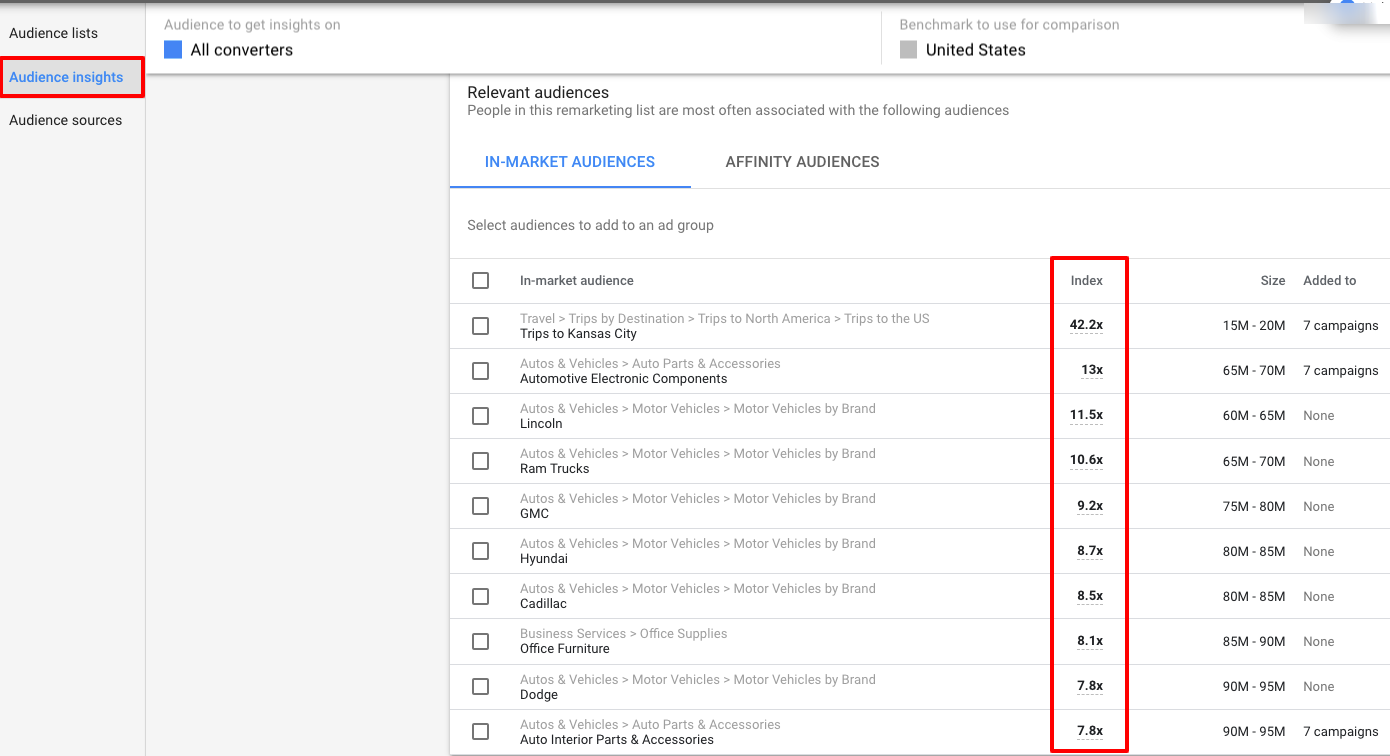As conscious digital marketers, many of us feel that we know our customer base or customer demographics. These are the website visitors we think we want to reach and captivate.
However, it begs the question:
Do you really know your true web audience?
Are you targeting the right group of people with our marketing efforts?
Or are you assuming that since you have business coming in the door, you are reaching the right audience?
A sound understanding of not only your customer base but your current web audience base can help you to improve messaging, ad targeting focus, and landing page look and feel.
At a prospective client meeting the other day I posed the question, “who is your target audience”?
I was given a persona with so many elements it could have possibly reflected every 45- to 55-year-old woman in America.
This reminded me of how I have been slightly annoyed with persona identification and creation since the content marketing rush a few years back. This time period saw a motivated group of marketers summing up the ideal customer.
As an example, Dan, age 50, married with two kids, a great job and a suburban home became who I needed to advertise to.
So what do we do, advertise only to 50-year-old males with a higher than average household income with a website architected solely for this audience?
Absolutely not.
What we should be doing is gaining an understanding of our customer demographics by traffic channel as well as the performance of advertising by demographic segment.
The perfect answer to my posed question at the recent meeting would have gone something like this:
“We typically see our customer base is a 44-55 woman but are seeing a lot of social media click-through activity from the under 30-year-old group. They are not converting well though.”
Another example:
“We see a lot of click-through activity in paid search from males but do not seem to bring them into a lead conversion.”
A keen understanding of the makeup of your web audience would allow us to start answering questions here.
You may be spending advertising dollars to an uninterested audience or providing the wrong site experience to a specific audience.
Your audience doesn’t necessarily have to be that specific persona, you’re making it that way.
To become all-knowing of your web audience, you will have to monitor from both your web analytics profiles as well as social advertising platforms.
Let’s take a look at how you can perfect your web audience intelligence.
Google Analytics Drill-down
Age & Gender by Default Channel Grouping & Source

Let’s start by reviewing the Default Channel Grouping primary dimension in Google Analytics.
Second, choose a secondary dimension of Age and Gender. Here, take look at the differences between these audiences by traffic volume.
Next, take a look at user behavior metrics such as bounce rate, time per session and pages per visit. You may begin to gain a sense for those groups that are apparently not interested in what you have to offer.
Age & Gender by Conversion Status

Create an advanced segment to only view sessions with conversions.
Next, review each step that we previously took and identify the gap of conversions and traffic based on age and gender.
In-Market Audiences by Source/Default Channel Grouping

To this point, you have gained an understanding of the age and gender breakout of your web audience by channel.
Now you should review Google’s compilation of the audience buckets these visitors have been placed into based on the other sites they commonly peruse across the internet.
Hopefully, this exercise has so far allowed you to understand who is visiting your site as well as who is converting.
You may come to find out that 50-year-old Dan comes through your site via Direct traffic and converts while gobs of traffic from different audience segments arrive via other channels only to bounce away from conversion.
Advertising Channels
Google Ads/Bing Ads

Pay-per-click advertising is a great way to capitalize on searcher intent, turning lower funnel visitors into customers.
However, like many, you’ve probably scratched your head over high click-through rates vs. low conversion rates.
Honing in on audience demographics within these respective platforms can help you to compare age groups, genders, household income vs. CTR, CPC, Cost/Conv. and other important metrics.
Eye-opening insights here can lead to a need to restrict adds from certain demographics or in the least the move to bid down on ads targeted to these audiences as they do not convert well.

Considering that we also recently reviewed in-market audiences in Google Analytics, integration between this and your Google Ads account will allow you to bid upon chosen in-market audiences.
This allows you to enhance ad visibility when searchers with similar interests to your site visitors and customers are searching Google.

Taking this a step further, Google’s Audience Insights allows us to find other in-market audiences that are highly likely to convert on our website vs. the average searcher as they are similar to those who convert on your site.
For this, you will need to create an audience in Google Analytics for those site visitors that reach conversion and share this with your Google Ads account.
Facebook Ads

Facebook may have quite possibly the most robust ad platform of the list of popular social media ad platforms.
A very helpful dissection of campaigns is through the Age and Gender breakdown. This is helpful for understanding the demographics of who is clicking on your ads and those providing reactions, comments, etc. on your ads.

From an organic social perspective, a review of the People section of Facebook Insights can show you the age and gender makeup of those who follow and engage with your Page.
Comparing this data with visit data in Google Analytics just as we did earlier can show you the difference between your general follower audience and those enticed to click into your site.
Additionally, notice how in these examples, young men engage with our paid ads while an older segment is engaging with our organic posts. Might we want to advertise to an older demographic?
LinkedIn Ads

While LinkedIn Ads will not provide us specific age and gender segmentation, they do provide information on seniority level.
This will allow you to understand if ad clicks are coming from entry-level employees or senior-level decision-makers.
Industry and job title insights on impression, click and conversion data help to show those with interest in what you are offering.
Again, are we focused on 50-year-old Dan or are we driving interest from an entirely different segment?

While Twitter’s audience level insights may not seem as rich as those found on other social media ad platforms, there is a convenience to review demographical data by toggling from organic followers to campaign-focused audiences.
Age insights are lacking but there is data surrounding gender, marital status as well as consumer behavior insights.
Knowledge Is Power
Hopefully, this exercise has provided a clear understanding between website convertors, non-converting visitors, and your perceived personas.
While it can be a healthy exercise to assume a target audience and plan on how to approach them, you have other segments of opportunity that you are neglecting.
Understanding your audience provides pathways into strategizing landing page experience which is another topic entirely its own.
More Resources:
- How to Know Your Audience to Master Your Marketing Campaigns
- 7 Methods to Research & Analyze Your Audience for SEO
- How to Use Facebook to Learn More About Your Audience
Image Credits
Featured Image: Created by author, September 2019
All screenshots taken by author, September 2019




